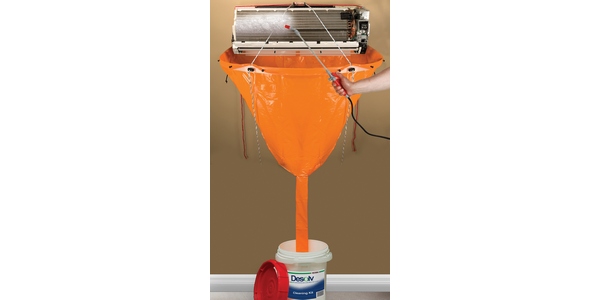Universal Appeal: How Recent Innovations in Universal Parts Save Contractors Time, Trouble on the Job
By David Vie
Most HVAC contractors would agree that time is perhaps the most valuable commodity in the field. More time in the day means more jobs which, of course, means more potential earnings. Plus, spending too much time on a particular job can have a negative impact on the contractor’s reputation and overall customer satisfaction. Not to mention if the contractor needs to wait for the part or make additional site visits, they’re taking valuable time away from another potential job.
Therefore, having the right part on the truck is crucial for getting the job done quickly and effectively. This is what makes the idea of universal replacement parts so attractive. Having thousands of OEM replacement parts in stock can be difficult and costly. Calling in special orders and dealing with overnight shipping charges can add costs, reduce profit and delay getting the job done. On the contrary, universal parts can help contractors more efficiently meet customer needs and increase reputation and profitability.
In the past, there has been some resistance to universal parts because they are perceived as being either of lesser quality to the original spare parts or too difficult to install. This skepticism is understandable, as contractors’ reputations in their local markets are critical to maintaining and growing their businesses, so they need to be sure parts are of the highest quality.
Fortunately, new advancements in design and technology have led to the introduction of high-quality universal parts (such as a universal flame sensor, universal gas valve and universal defrost control) that have the capability to replace several models and brands of cooling and heating parts, matching the fit, form and function of the original parts. These parts can be easily adaptable and installed, and some even feature drop-in replacement capabilities with minimal setup required. These new universal parts are also designed to maintain overall system performance, efficiency and durability.
New age of universal parts
What separates the new universal parts from subpar ones is the amount of work and attention to detail from the manufacturers’ end. To make this new technology possible, manufacturers conduct extensive research, such as identifying the controllers from the successful original equipment manufacturers and creating a list of all the available part numbers, studying wiring diagrams to understand the differences between controllers and even scanning various online forum and service bulletins to document changes or issues regarding these parts.
Another crucial element of the product development involves studying the actual control boards and examining them carefully. In many cases this could also include purchasing complete units, such as furnaces, to study the parts as they operate in a system. This information is then used to ensure the replacement control board will operate properly across as broad a group of applications as possible.
The last step, which may be the most important, is educating contractors on this new technology so they understand how the universal part and its functionality might be slightly different from the original control board they are replacing.
For contractors, recent innovations in universal parts provide major benefits for tackling their day-to-day repairs. The replacement coverage, quality and simplicity of this technology helps contractors condense inventory requirements, cover applications with few SKUs, reduce time and travel searching for exact parts and ensure they always have the right part in stock and on the truck.
An easier, more connected future
One of the strongest contributing factors for making this technology both viable and efficient is the Internet of Things and the higher level of connectivity it provides. Some universal parts now available on the market are supported by mobile apps that simplify installation, setup and troubleshooting.
This connectivity is also driven by near-field communication protocols, which enable communication between electronic devices and let contractors easily set up the part via a phone app in a matter of minutes. Rather than setting up the part in a tight or uncomfortable spot, contractors do so from the front seat of their truck if they wish. Or, they can set up the part in advance to cut down on the amount of time needed on the physical jobsite. Some universal parts are even set up in the factory with default settings that only require slight configuration on the app, which can save even more time on each job.
For contractors concerned about the ease of use of this new technology, it should be noted that many of the universal parts being introduced are now designed for easier, more accurate troubleshooting. Some feature built-in diagnostics that allow contractors to troubleshoot issues, with causes and solutions appearing on the mobile app.
Universal parts may have had their share of skeptics in the past, but considering the number of recent product innovations, it may be time for contractors still on the fence to give these parts a second look.
Those who embrace these new types of universal parts will spend less time fumbling for the right part in their truck and more time serving their customers. And the time-saving benefits from this technology can lead to better customer reviews, less headaches and, ultimately, a better bottom line for their business.
David Vie is director of electronic controls, Comfort Control, for Emerson.



